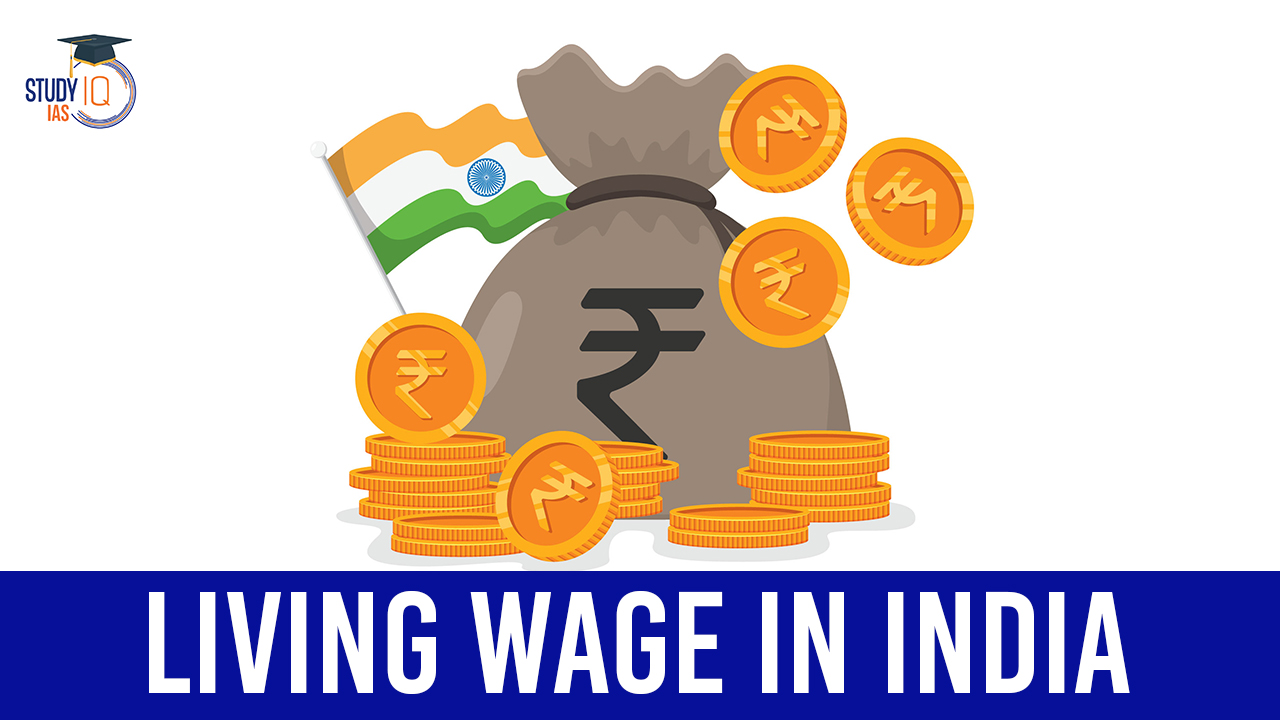Table of Contents
India, one of the world’s largest economies with a vast workforce, is poised to undergo a significant transformation in its wage policy. The country is moving away from the traditional minimum wage system towards embracing living wages, signaling a fundamental shift in how worker compensation is determined.
Living Wage in India
India is poised to replace minimum wages with living wages by 2025, seeking guidance from the International Labour Organization. Living wages, endorsed by the ILO, ensure workers can afford basic needs like housing and healthcare. With over 500 million workers, India’s move aims to bridge wage disparities and enhance worker well-being. This shift aligns with India’s commitment to sustainable development and poverty eradication, marking a significant stride towards social and economic equity.
What is Living Wage?
A living wage is the minimum income necessary for a worker to meet their basic needs and maintain a decent standard of living. It goes beyond the concept of a minimum wage, which may only cover essential expenses like food and shelter. Living wages take into account additional factors such as healthcare, education, transportation, and other essential needs, ensuring that workers can afford a dignified life for themselves and their families.
We’re now on WhatsApp. Click to Join
Rationale for Change
The decision to transition to living wages stems from a recognition of the limitations of the existing minimum wage system. While minimum wages provide a baseline level of compensation, they often fall short of meeting the diverse needs of workers, particularly in the face of rising living costs.
Challenges in the Current System
India’s workforce, predominantly concentrated in the unorganized sector, faces numerous challenges under the current wage regime. Disparities in wage rates across states, coupled with insufficient compensation levels, underscore the need for a more equitable and inclusive approach to wage determination.
Legal Framework and Policy Implications
The Code on Wages, passed in 2019 but pending full implementation, lays the groundwork for establishing a uniform wage floor applicable nationwide. Once enacted, this legislation will provide the legal framework for transitioning from minimum wages to living wages, ensuring that all workers receive fair and adequate compensation.
Collaboration with the International Labour Organization (ILO)
India has sought technical assistance from the International Labour Organization (ILO) to develop a comprehensive framework for estimating and operationalizing living wages. The collaboration with the ILO reflects India’s commitment to leveraging international expertise in implementing progressive wage policies.
Integration with Sustainable Development Goals (SDGs)
The shift towards living wages aligns with India’s broader development agenda, particularly its commitment to achieving the Sustainable Development Goals (SDGs) by 2030. By prioritizing worker welfare and poverty eradication, India aims to accelerate progress towards sustainable and inclusive development.
Incorporating Multidimensional Factors
Key officials have emphasized the importance of incorporating multidimensional factors such as health, education, and standard of living into the definition of living wages. This holistic approach reflects India’s commitment to addressing not only material deprivation but also broader socio-economic disparities.
Minimum Wage Vs. Living Wage
| Aspect | Minimum Wage | Living Wage |
| Definition | The lowest legal wage that employers can pay workers. | The minimum income required for a worker to afford basic necessities and maintain a decent standard of living. |
| Scope | Typically set by governments or regulatory bodies. | Comprises a broader range of factors beyond basic needs, such as healthcare, education, transportation, and savings. |
| Purpose | Provides a baseline level of compensation for workers. | Ensures that workers can afford a dignified life, covering all essential needs and contributing to overall well-being. |
| Determination | Often based on factors such as labor market conditions, inflation, and social considerations. | Calculated based on the cost of living in a specific geographic area, considering various expenses required for a decent standard of living. |
| Implementation | May vary across regions or industries within a country. | Aimed at being universally applicable, providing a standard of living that enables workers to thrive regardless of location or occupation. |
| Societal Impact | May help prevent exploitation of workers but may not always be sufficient to cover all basic needs. | Reduces income inequality, enhances worker satisfaction and productivity, and contributes to overall economic stability and social welfare. |
Significance of Living Wage
- Poverty Reduction: Living wages lift workers out of poverty by ensuring they can afford basic necessities.
- Improved Quality of Life: Workers can access healthcare, education, and other essential services, leading to better overall well-being.
- Reduced Income Inequality: Living wages help narrow the gap between high and low-income earners, promoting social equity.
- Enhanced Productivity: Adequately compensated workers are more motivated, leading to increased productivity and economic growth.
- Lower Reliance on Social Welfare: Workers earning a living wage are less likely to require government assistance, reducing the burden on social welfare programs.
- Strengthened Consumer Demand: Higher wages enable workers to spend more, driving consumer demand and stimulating economic activity.


 Growth in Gold Loans and NPAs, Reasons a...
Growth in Gold Loans and NPAs, Reasons a...
 How RBI Responded To Global Trade War Ch...
How RBI Responded To Global Trade War Ch...
 Why Confidence in US Dollar is Falling?
Why Confidence in US Dollar is Falling?





















